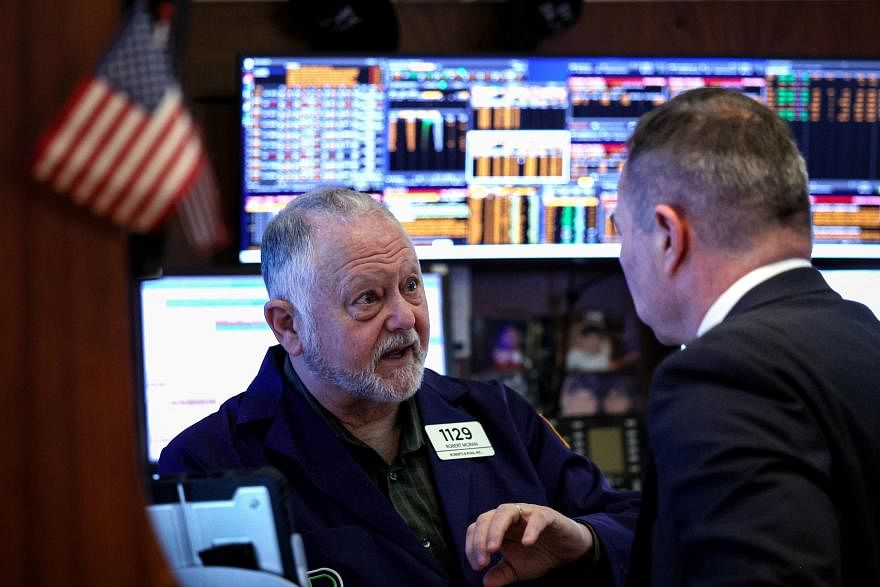FINANCIAL firms are racing to integrate artificial intelligence (AI) into as many of their operations as they can. But investors continue to struggle to harness the technology to the business’s central goal: predicting price movements in a way that boosts profits.
It is a challenge that is proving far tougher than enlisting computer algorithms to summarise research reports. Even those sure that AI will one day revolutionise stock-picking think getting there will come through a long series of small tweaks and might initially produce a modest edge, though on Wall Street even a modest edge can mint billions.
1. How are financial firms using AI?
In all sorts of roles, including customer service and making trade execution more efficient. JPMorgan Chase says that it sees more than 300 use cases for AI across its operations. In terms of boosting investment returns, hopes largely rest on machine learning, the subfield of AI where computers are trained on massive amounts of data to perform particular tasks. Machine learning encompasses both generative AI – the content-creating power behind ChatGPT – and predictive AI, which uses past results to forecast future outcomes. All of this builds on so-called quantitative, or quant, investing, a decades-old approach in which money managers have used computers to crunch piles of numbers to develop formulas for picking securities.
2. How can these programs add to stock-picking?
Generative AI, which mimics the workings of the human brain to perform complex cognitive tasks, can be trained on vast quantities of pre-existing material and learn how to use that information to craft something new, such as a blurb for a new novel, a summary of a report, a poem or a legal contract. When applied to finance, this can mean synthesising research or writing basic code and investment reports. Predictive AI looks for patterns in historical data to assess the probability of future events. The hope is that as an investing tool, predictive AI can crunch huge amounts of financial data and come up with informed predictions, such as where a bond price is headed.
3. Who is using AI, and how?
To take one example, an old-school quant, Jason Hsu of Rayliant Global Advisors, has gone from picking stocks based on six criteria to using an AI algorithm that tracks some 200 signals. The hope is that AI can take a rule like “buy stocks with the lowest price-to-book ratios” and figure out what specific sectors and market conditions the rule works best in. Most money managers using AI try to combine new techniques with established theory.
4. How could it improve results?
Traditional quant models are based on linear relationships, such as the observation that value stocks go up over time. Quant specialists say that approach can produce results that are easy to interpret but fail to capture the complexity of markets. They are finding that recent predictive AI models are better at fitting in a large number of inputs and detecting complicated patterns, including how different variables interact with one another. The large language models powering generative AI programs can also improve something known as natural language processing, which financial professionals already use to parse earnings statements, call transcripts and other documents to detect trading signals or potential investment risks.
Whereas older iterations relied on spotting particular words, the latest tech is better at analysing context, making them more accurate. Some academic studies have shown that ChatGPT can be used to decipher the market implications of “Fedspeak” – the guarded jargon in which central bankers often talk about interest rates – and corporate news in ways close to what a human expert can achieve.
5. Does this work?
So far there is little evidence of AI giving a tangible advantage. A Eurekahedge index of 12 funds using AI has trailed its broader hedge fund index by about 14 percentage points over the past five years.
According to Plexus Investments, an asset manager that tracks the returns of boutique AI funds, only 45 per cent outperform the benchmarks they measure themselves against. On the other hand, a 2021 academic paper suggested mutual funds powered by the technology beat their human-managed peers, though not the market.
6. What are the hurdles?
Machines get bamboozled by noisy markets, and finance – surprisingly – sometimes lacks the oceans of data that underpin the technology in other domains. (A traditional quant strategy might track a stock’s price on a monthly or even quarterly basis to eliminate the noise seen in daily or minute-by-minute data sets. But that means they will have fewer than 2,000 data points even for stocks in companies that have been around for a century.)
When AI programs do discover potentially profitable patterns, those can be disrupted by sudden changes in trends. Another hurdle is AI’s lack of what might be called explainability, since it can be difficult to know how a program reached a given conclusion. It turns out human investors generally like to know what has gone wrong when they lose money. BLOOMBERG







